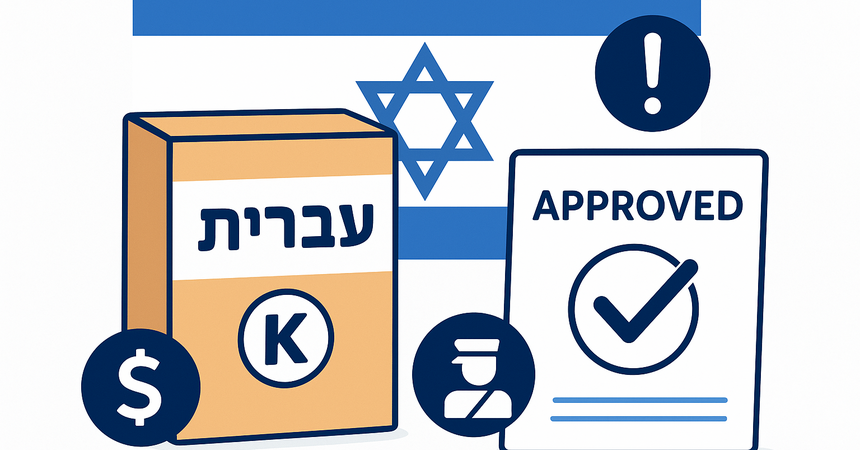For successful entry into the Israeli market, certification alone is not enough. Proper product labeling and indication of compliance with national standards are mandatory. Mistakes at this stage can lead to customs delays, fines, or even product recalls from store shelves. This article explains how the labeling system in Israel works, what information must be provided, and how it differs from international practices.
Regulatory Authorities
The labeling and standards system is supervised by several bodies:- Standards Institution of Israel (SII) — responsible for developing standards and verifying compliance.
- Ministry of Health (MOH) — regulates food, beverages, and pharmaceuticals.
- Ministry of Industry and Trade — monitors imported goods and their compliance with mandatory requirements.
1. Language
Labeling must be in Hebrew. English or Russian may also be added, but Hebrew is mandatory.
2. Packaging Information
Required data:
- product name;
- country of origin;
- ingredients (for food products);
- technical specifications (for equipment and electronics);
- importer or distributor details in Israel;
- expiration date and storage conditions;
- warnings (e.g., allergens, operational risks).
- Food and beverages: nutrition facts table, allergens, kosher status (if applicable).
- Electronics and appliances: SII safety mark confirming successful testing.
- Medical devices: Ministry of Health registration number.
For certain categories, a special Israeli compliance mark is required, confirming the product has passed SII testing.
Differences from International Systems
- In the EU, CE marking is used; in Israel, the local SII mark is mandatory. CE does not replace it.
- In the US, FDA requires labeling in English; in Israel, Hebrew is essential.
- For food products, kosher labeling is mandatory in Israel, unlike other countries.
If labeling rules are not met:
- products may be held at customs;
- companies risk fines;
- goods can be removed from retail shelves.
- Prepare packaging and labels in advance, including Hebrew requirements.
- Verify if your product requires the SII mark.
- Check with certification authorities about additional warnings and symbols.
- Work with local experts to avoid labeling mistakes.
